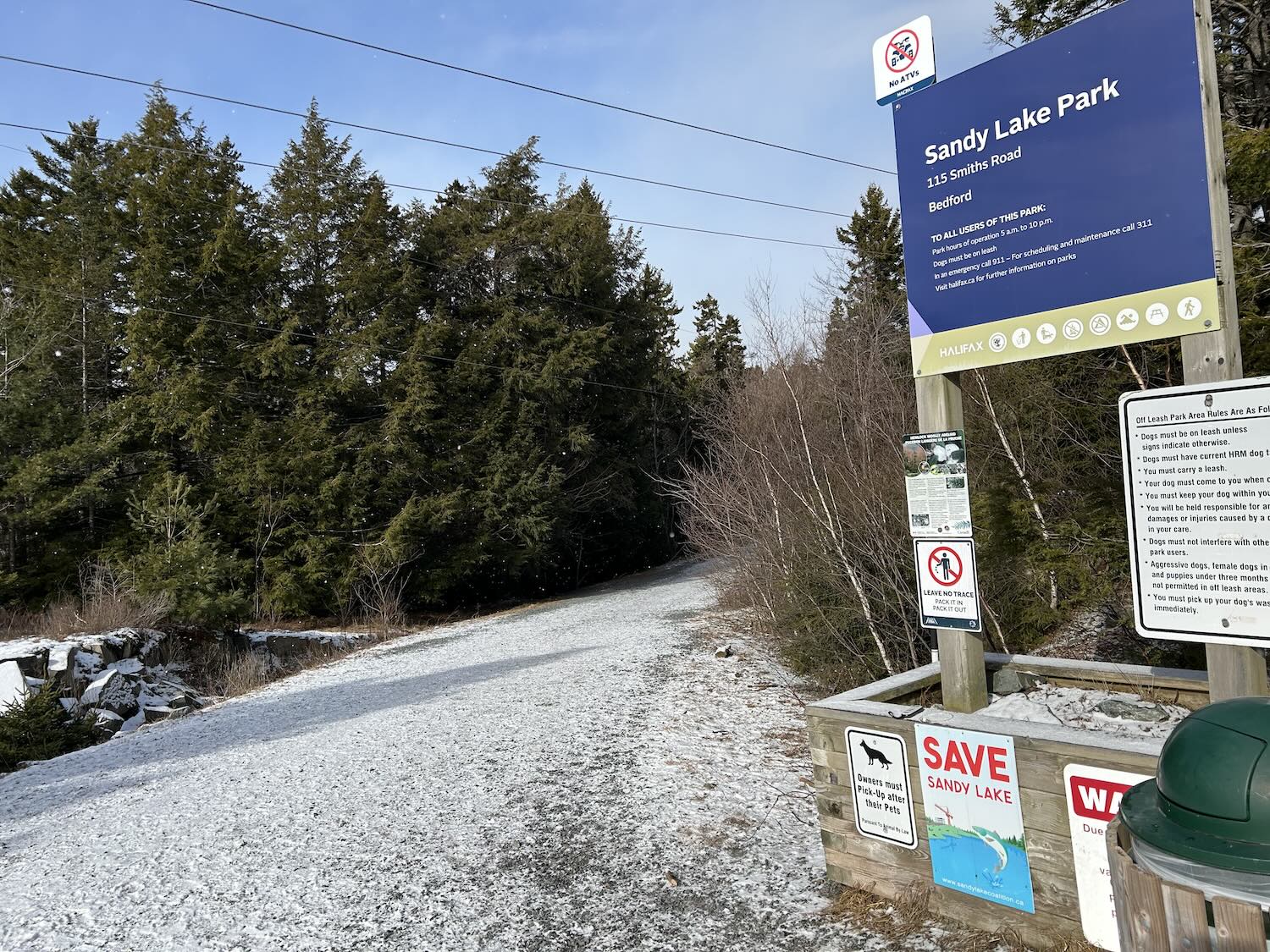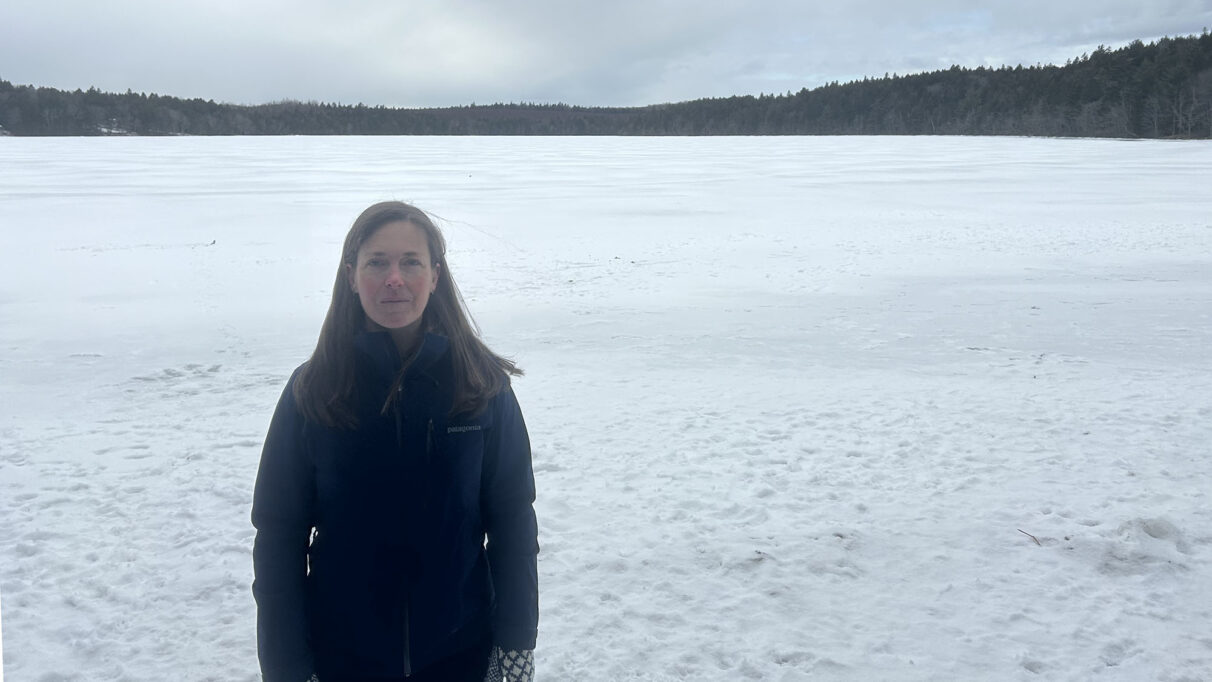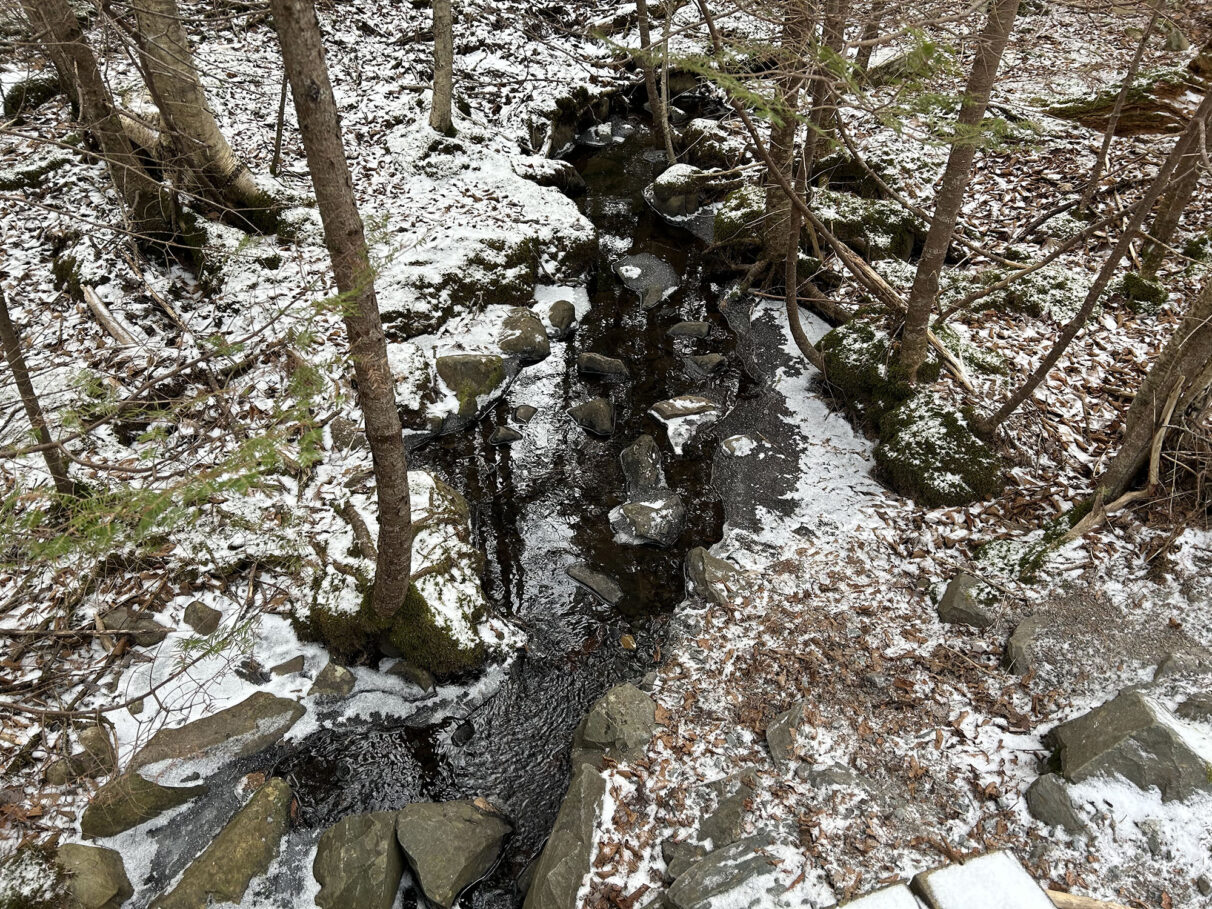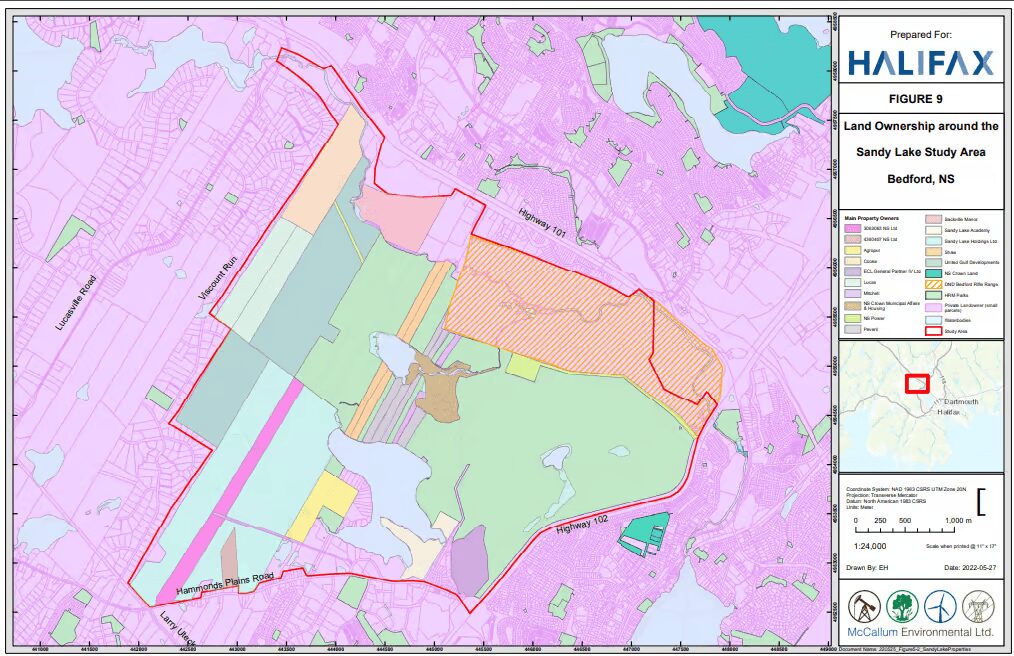Lack of info on development leaves Sandy Lake waters unclear
Environmentalists, ex-MLA question Special Planning Area in Bedford

caption
The entrance to Sandy Lake Park in Halifax on Jan. 27, 2025. A poster to “Save Sandy Lake” can be seen on the entrance sign.A fast-tracked housing development north of downtown Halifax has sparked concerns about the potential impact on wildlife and waterways.
The Sandy Lake-Sackville River Regional Park Coalition is composed of 30 organizations that want to stop a proposed 9,200-unit development around Sandy Lake and the Sackville River, about 15 km north of downtown Halifax.
The subdivision would be part of a Special Planning Area (SPA) on the west side of Sandy Lake. SPA status fast tracks potential housing developments by putting decision-making power in the hands of a provincial task force rather than Halifax Regional Municipality.

caption
Karen McKendry, from the Ecology Action Centre, stands in front of a frozen-over Sandy Lake on Jan. 27, 2025. The far shore is the site of the proposed housing development in Lower Sackville, N.S.Karen McKendry of the Ecology Action Centre said a housing development could change Sandy Lake’s nutrient composition, impacting species across the watershed.
“If you put housing right where the headwater lakes are, too much nitrogen and phosphorus runs across people’s lawns and off people’s roofs and from the streets, it’s too many nutrients,” McKendry told The Signal.
“It changes the water chemistry of the lake and makes blue green algae more common.”

caption
A stream flows into Sandy Lake on Jan. 27, 2025. Many toad and frog species lay eggs in the freshwater streams around Sandy Lake.Algal blooms can greatly reduce the amount of dissolved oxygen in a lake, which can harm fish populations. Environmentalists say a lack of oxygen could put species at risk, including the Atlantic Salmon, which is endangered in Nova Scotia and can be found in Sandy Lake during summer months.
McKendry said her group is unable to question provincial decision makers in a public forum, which has her feeling that “one part of the democratic process has been removed.” She adds that it falls to MLAs to voice concerns to provincial officials.
Braedon Clark was one such MLA, serving in Bedford South from 2021 to 2024. He told The Signal that a lack of local consideration is one flaw of the Special Protection Area system.

caption
Figure 1: Map of the Sandy Lake Special Planning Area.The SPA is on the Western shore of the lake.
(Image credit: Halifax.ca)
“The entire process does not really take into account local circumstances,” said Clark. “There’s a balance that needs to be struck between developing more housing and protecting the environment. I’m not sure if the Special Planning Area system is as nuanced as it should be to make sure that those values are balanced.”
A watershed study, a land suitability analysis and an infrastructure master plan are to be completed prior to the construction of housing units. However, the results of the studies have not been made available to the public.
“I know there have been studies done, there are studies underway, I’ve seen some of them, which are quite detailed, and that’s good,” said Clark.
“But to me, a lot of that information also needs to be made as public as possible.”

